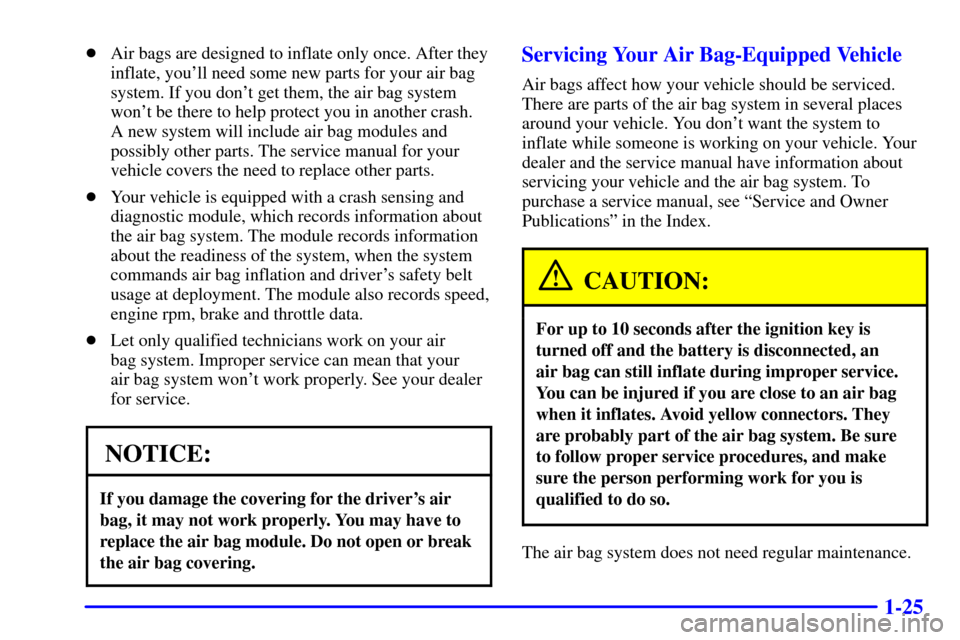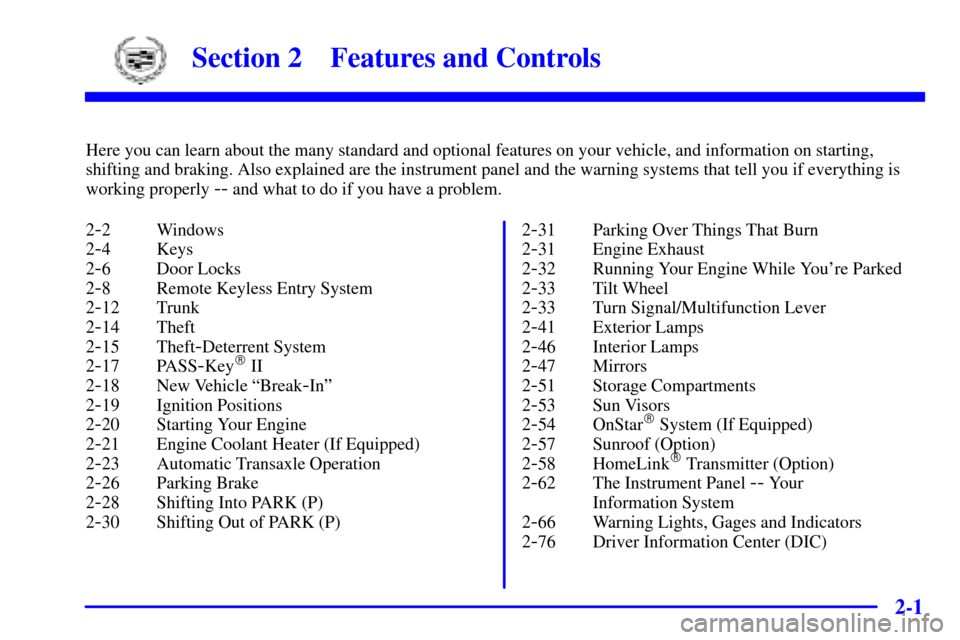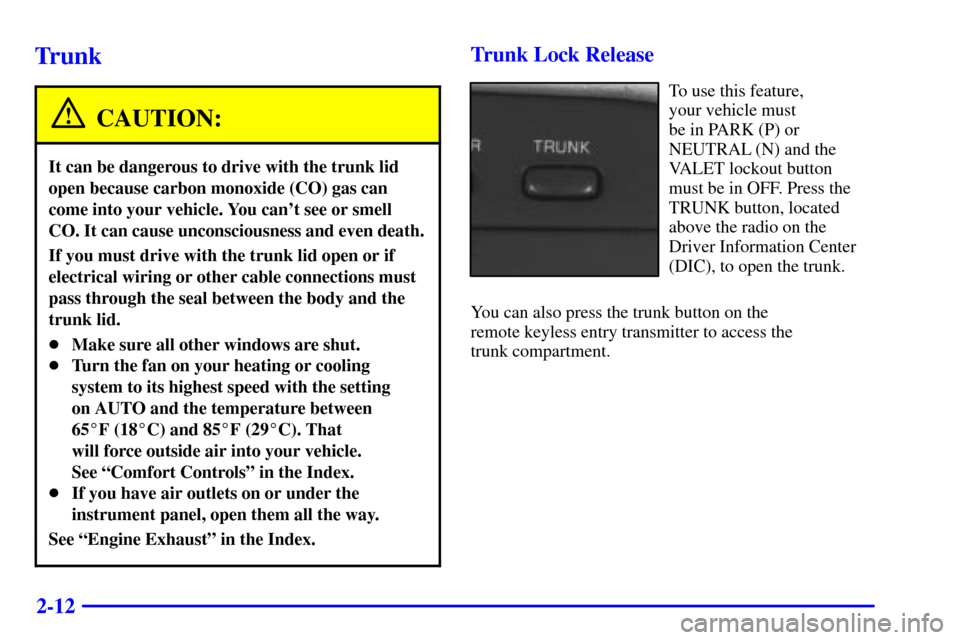Page 5 of 335
Section
3
Comfort Controls and Audio Systems
Section
4
Your Driving and the Road
Section
5
Table of Contents (cont'd)
Defensive Driving
Drunken Driving
Control of a Vehicle
BrakingSteering
Driving Tips for Various Road Conditions
Loading Your Vehicle
Towing a Trailer Heating and Air Conditioning
Setting the Radio Clock
Radio/Cassette Player/CD Player (If Equipped)Radio Theft-Deterrent Feature
Steering Wheel Controls
Hazard Warning Flashers
Jump Starting
Towing Your VehicleEngine Overheating
Changing a Flat Tire
If You're Stuck
Problems on the Road
iii
Page 6 of 335
Fuel
Checking Fluids and Lubricants
GM Oil Life System™
Engine Air Cleaner/Filter
Brakes
Bulb ReplacementWindshield Wiper Blade Replacement
Tires and Wheels
Appearance Care
Electrical System/Fuses and Circuit Breakers
Capacities and Specifications
Normal Maintenance Replacement Parts
Table of Contents (cont'd)
Maintenance Schedule Service and Appearance Care
Section
6
Scheduled Maintenance
Owner Checks and Services
Periodic Maintenance InspectionsRecommended Fluids and Lubricants
Maintenance Records
See separate Maintenance Schedule Booklet
iv
Page 11 of 335

ix
For example,
these symbols
are used on an
original battery:
CAUTION
POSSIBLE
INJURY
PROTECT
EYES BY
SHIELDING
CAUSTIC
BATTERY
ACID COULD
CAUSE
BURNS
AVOID
SPARKS OR
FLAMES
SPARK OR
FLAME
COULD
EXPLODE
BATTERY
These symbols
are important for
you and your
passengers
whenever your
vehicle is driven:
CHILD
RESTRAINT
TOP STRAP
ANCHOR
DOOR LOCK
UNLOCK
FASTEN
SEAT
BELTS
POWER
WINDOW
AIR BAG
These symbols
have to do with
your lamps:
MASTER
LIGHTING
SWITCH
TURN
SIGNALS
PARKING
LAMPS
HAZARD
WARNING
FLASHER
DAYTIME
RUNNING
LAMPS
FOG LAMPS
These symbols
are on some of
your controls:
WINDSHIELD
WIPER
WINDSHIELD
WASHER
WINDSHIELD
DEFROSTER
REAR
WINDOW
DEFOGGER
VENTILATING
FAN
These symbols
are used on
warning and
indicator lights:
ENGINE
COOLANT
TEMP
BATTERY
CHARGING
SYSTEM
BRAKE
COOLANT
ENGINE OIL
PRESSURE
ANTI-LOCK
BRAKES
Here are some
other symbols
you may see:
FUSE
LIGHTER
HORN
FUEL
Vehicle Symbols
These are some of the symbols you may find on your vehicle. Also see ªWarning Lights and Gagesº in the Index.
Page 12 of 335
For
a More
Detailed Look at
What's Under the Hood
See Section 6
Tire Pressure
See Section 6
Service Station Guide
Oil Viscosity
Engine Oil
See Section 6
Engine Oil Dipstick
See Section 6Remote Fuel
Door Release
See Section 6
Cooling System
See Section 5
Hood Release
See Section 6
Windshield Washer
Fluid
See Section 6
Spare Tire Pressure
See Section 5
Alternate
Fuel Door Release
See Section 6
Battery
See Section 6
Fuel
Use unleaded only.
See Section 6
for octane ratings.
Page 37 of 335

1-25
�Air bags are designed to inflate only once. After they
inflate, you'll need some new parts for your air bag
system. If you don't get them, the air bag system
won't be there to help protect you in another crash.
A new system will include air bag modules and
possibly other parts. The service manual for your
vehicle covers the need to replace other parts.
�Your vehicle is equipped with a crash sensing and
diagnostic module, which records information about
the air bag system. The module records information
about the readiness of the system, when the system
commands air bag inflation and driver's safety belt
usage at deployment. The module also records speed,
engine rpm, brake and throttle data.
�Let only qualified technicians work on your air
bag system. Improper service can mean that your
air bag system won't work properly. See your dealer
for service.
NOTICE:
If you damage the covering for the driver's air
bag, it may not work properly. You may have to
replace the air bag module. Do not open or break
the air bag covering.
Servicing Your Air Bag-Equipped Vehicle
Air bags affect how your vehicle should be serviced.
There are parts of the air bag system in several places
around your vehicle. You don't want the system to
inflate while someone is working on your vehicle. Your
dealer and the service manual have information about
servicing your vehicle and the air bag system. To
purchase a service manual, see ªService and Owner
Publicationsº in the Index.
CAUTION:
For up to 10 seconds after the ignition key is
turned off and the battery is disconnected, an
air bag can still inflate during improper service.
You can be injured if you are close to an air bag
when it inflates. Avoid yellow connectors. They
are probably part of the air bag system. Be sure
to follow proper service procedures, and make
sure the person performing work for you is
qualified to do so.
The air bag system does not need regular maintenance.
Page 62 of 335

2-
2-1
Section 2 Features and Controls
Here you can learn about the many standard and optional features on your vehicle, and information on starting,
shifting and braking. Also explained are the instrument panel and the warning systems that tell you if everything is
working properly
-- and what to do if you have a problem.
2
-2 Windows
2
-4 Keys
2
-6 Door Locks
2
-8 Remote Keyless Entry System
2
-12 Trunk
2
-14 Theft
2
-15 Theft-Deterrent System
2
-17 PASS-Key� II
2
-18 New Vehicle ªBreak-Inº
2
-19 Ignition Positions
2
-20 Starting Your Engine
2
-21 Engine Coolant Heater (If Equipped)
2
-23 Automatic Transaxle Operation
2
-26 Parking Brake
2
-28 Shifting Into PARK (P)
2
-30 Shifting Out of PARK (P)2
-31 Parking Over Things That Burn
2
-31 Engine Exhaust
2
-32 Running Your Engine While You're Parked
2
-33 Tilt Wheel
2
-33 Turn Signal/Multifunction Lever
2
-41 Exterior Lamps
2
-46 Interior Lamps
2
-47 Mirrors
2
-51 Storage Compartments
2
-53 Sun Visors
2
-54 OnStar� System (If Equipped)
2
-57 Sunroof (Option)
2
-58 HomeLink� Transmitter (Option)
2
-62 The Instrument Panel -- Your
Information System
2
-66 Warning Lights, Gages and Indicators
2
-76 Driver Information Center (DIC)
Page 73 of 335

2-12
Trunk
CAUTION:
It can be dangerous to drive with the trunk lid
open because carbon monoxide (CO) gas can
come into your vehicle. You can't see or smell
CO. It can cause unconsciousness and even death.
If you must drive with the trunk lid open or if
electrical wiring or other cable connections must
pass through the seal between the body and the
trunk lid.
�Make sure all other windows are shut.
�Turn the fan on your heating or cooling
system to its highest speed with the setting
on AUTO and the temperature between
65�F (18�C) and 85�F (29�C). That
will force outside air into your vehicle.
See ªComfort Controlsº in the Index.
�If you have air outlets on or under the
instrument panel, open them all the way.
See ªEngine Exhaustº in the Index.
Trunk Lock Release
To use this feature,
your vehicle must
be in PARK (P) or
NEUTRAL (N) and the
VALET lockout button
must be in OFF. Press the
TRUNK button, located
above the radio on the
Driver Information Center
(DIC), to open the trunk.
You can also press the trunk button on the
remote keyless entry transmitter to access the
trunk compartment.
Page 79 of 335

2-18
If the engine does not start and the STARTING
DISABLED REMOVE KEY message is displayed in
the Driver Information Center, your key should be
checked for damage. Starting may be attempted with
an undamaged key immediately. See your dealer or a
locksmith for key service.
If the STARTING DISABLE REMOVE KEY and
WAIT 3 MINUTES messages are displayed, the key
should be cleaned. After three minutes, try again.
A START CAR message will appear at this time. If the
engine still does not start, wait three minutes and try a
duplicate key. At this time, fuses should be checked
(see ªFuses and Circuit Breakersº in the Index). If the
engine does not start with the duplicate key, your vehicle
needs service. See your dealer for service.
If the THEFT SYSTEM PROBLEM, CAR MAY NOT
START message is displayed during vehicle operation,
a fault has been detected in the system. This means the
PASS
-Key II system is disabled and is not protecting
the vehicle. The vehicle usually restarts. See your dealer
for service.
If an ignition key is lost or damaged, see your dealer or
a locksmith to have a new key made.
New Vehicle ªBreak-Inº
NOTICE:
Your vehicle doesn't need an elaborate ªbreak-in.º
But it will perform better in the long run if you
follow these guidelines:
�Don't drive at any one speed -- fast or
slow
-- for the first 500 miles (805 km).
Don't make full
-throttle starts.
�Avoid making hard stops for the first
200 miles (322 km) or so. During this time
your new brake linings aren't yet broken
in. Hard stops with new linings can mean
premature wear and earlier replacement.
Follow this breaking
-in guideline every
time you get new brake linings.
�Don't tow a trailer during break
-in.
See ªTowing a Trailerº in the Index for
more information.